Ever since the early Australopithecines invented the fist, humans and their ancient ancestors have been beating one another about the heads with them, both in the interest of scientific curiousity—how hard and how often must I hit you in the head before you stop hitting me back/fall down/stop talking/get your hands off of my woman?—and sport—I bet two shells and one fish on Og to beat stuffing out of Unk!
At first we had to wait for fights to break out before we could study/bet on them. But it wasn’t long before we brainy bipeds found ways to instigate fights any time we wanted. “Hey Og, you hear what Unk say about wife?” Eventually a “sport” was created, in which we’d actually pay two guys to beat the tar out of one another, whether or not they’d ever met, let alone slept with the other’s wife. Our money, and perhaps a general love of crushing all who would oppose them, was all it took to start a brawl.
Early fights featured few if any regulations. No gloves, no rounds, no judges. Just two guys, four fists, and a crowd of bloodthursty spectators. Later such refinements as gloves and rules were added. And so boxing was born.
Sure, some people claim that boxing isn’t a sport. Something about the object being to physically disable the other guy such that they may no longer compete, when “competing” means nothing more than disabling the first guy. And if someone drops dead? So be it. They chose to fight of their own free will. Well, probably.
The life of the boxer is a fabled one. Hard luck guys scrabbling to better themselves the only way they know how. Harder luck guys never making it at all. Guys bought by mobsters to take a fall. Guys too hard-headed to take the fall shot dead by said mobsters. It’s a dog eat dog world.
This week’s Mind Control Double Feature delves into the lives of two especially hard-headed boxers, one forced out of the game before the movie even starts, and the other unable to give up the fight, no matter the cost.
On The Waterfront (’54)
You might have heard of this one. It’s beyond famous and beloved by all. If you’ve never seen it, now’s the time. If you have, now’s still the time. It’s one of those old movies you hear so much about you figure it must be incredibly overrated, or merely great for its time, and then you watch it and think, holy mother of moonshine! This ain’t no old-timey bunch a bananas! It’s chock full of awesome! Or thoughts to that effect.
Marlon Brando plays Terry Malloy, a dockworker who used to be a boxer until he took the fall in a fixed fight, dooming his career, but making plenty of money for crime boss Johnny Friendly (Lee J. Cobb). Terry’s brother Charley (Rod Steiger) works for Friendly. He’s the one who told Terry to throw the fight.
Terry continues being used by Friendly and Charley. Seems a dockworker named Joey is going to testify against Friendly before the Crime Commission. Terry, not realizing what he’s doing, leads Joey to his death.
Terry’s not happy about it, but the rule of the docks is that you don’t talk to no one about nothin’. If you do, you wind up like Joey. So what’s Terry do? He goes and falls for Joey’s hot sister, Edie (Eva Marie Saint, in her film debut). He also meets the local priest, Father Barry (a very tough, and very young (though was he ever young?) Karl Malden), who’s trying to organize a group of dockworkers to testify against the mob. Problem is, Friendly keeps killing anyone who agrees to testify.
So you see where this is going. Eva and Father Barry want Terry to testify. Friendly sees that as a problem, and he uses Charley against Terry, leading to what is possibly the most famous scene in the history of film, Terry and Charley in the backseat of a car, Terry lamenting what might have been, and how it was Charley all along who prevented him from being a successful boxer. “I coulda had class. I coulda been a contender. I coulda been somebody, instead of a bum, which is what I am, let’s face it.”
Brando is on another planet in this scene. He’s so inside it he comes out the other side. If you know what I mean. I don’t. I hope someone does. He’s amazing, is the point. The director, Elia Kazan, talks of how Brando said there was no way Terry could actually believe his brother would shoot him (even though Friendly wants him to do just that), so in the scene Terry gently pushes away the gun Charley has pointed at him. In those days Brando had a way of playing the extremes of tough and vulnerable in the same character, in the same scene, in the same damn line reading.
On The Waterfront is written by Budd Schulberg, and like Kazan, he named names of Communists to Congress during the Communist witch hunt of the early ‘50s. Parts of On The Waterfront seem to be about Schulberg and Kazan making arguments for why they felt what they did was the right thing, why they felt they were telling the truth in the face of those who felt otherwise. I’m not so sure the movie works as an argument for naming names to congress. But let’s leave that aside for now.
It’s a movie about standing up for what’s right because you know it’s the right thing to do, no matter the consequences. When Terry threw his fight, he knew it was wrong. It killed his career, killed his relationship with his brother, and killed a part of his soul, too. The question is, when next faced with a decision to do what’s right, will he fold, or will he stand up for himself?
Also awesome? Original music composed by Leonard Bernstein, his sole original movie score.
Now that we’ve seen what happens when a good-hearted boxer does the wrong thing and loses his way, we turn to a hard-headed fighter who never gives up.
Raging Bull (’80)
Martin Scorsese was at a low point in his life when he agreed to make Raging Bull, a story Robert De Niro had wanted to make for years. It’s based on the life story of boxer Jake LaMotta, and it ain’t pretty.
The movie is physically and psychologically violent in the extreme, offset by humor and the beauty of the filmmaking. It’s shot in black & white by cinematographer great Michael Chapman. Each of the fights is shot uniquely to reflect LaMotta’s states of mind. Instead of shooting the fights from outside the ring, the standard practice in boxing movies, Scorsese put Chapman in the ring, where he followed the fighters with a hand-held camera, putting the audience in the place of the other fighter. The fights themselves are choreographed like dance.
The movie begins in ’64 with a fat, old Jake in the tiny green room of a club, practicing his one-man act, which seems to involve the rattling off of extremely bad verse by the worst actor in history (“And though I’m no Olivier / If he fought Sugar Ray / He would say / That the thing ain’t the ring, it’s the play. / So give me a… a stage / Where this bull here can rage / And though I could fight / I’d much rather recite… / That’s entertainment!”). De Niro famously gained 70 pounds to play this part of the movie. He’s like a horribly deformed De Niro balloon. He looks ready to burst.
From there we cut back to ’41, and follow the story of a young Jake LaMotta, up and coming middleweight boxer living in the Bronx. Like On The Waterfront, Raging Bull is a story of brothers. Jake’s brother is Joey (played by newcomer Joe Pesci). He’s doing all he can to get Jake a shot at the middleweight title, but the fights are controlled by the mob, and Jake refuses to play along.
One of my favorite scenes of the movie is the first time we meet Jake. He’s in his apartment, waiting for his first wife, Irma, to cook a steak. “Don’t overcook it. You overcook it, it’s no good. It defeats its own purpose…Bring it over! It’s like a piece of charcoal!” Followed by a good five minutes of the pair of them yelling bloody murder at each other, with Joey trying to calm everyone down. Which scene then ends with Jake insisting that Joey punch him in the face as hard as he can. And again. And again. And again. For what purpose? Who the fuck knows? Not Jake.
Basically the movie is structured with fights in the ring alternating with fights outside the ring. Jake’s head, inside and out, is like an anvil. He’s not too smart, but he’s driven and single-minded. He ditches Irma once he meets 15 year-old Vicky (Cathy Moriarty, in her movie debut). He spends the rest of their relationship sure she’s cheating on him, which it’s at least suggested she is. Their relationship is, to say the least, volatile. Eventually Jake accuses Joey of sleeping with her, thereby destroying the brothers’ relationship.
De Niro’s performance is unlike anything I’ve ever seen. His eyes have a kind of stone-like deadness to them. They go only so deep. This is a man who doesn’t get nuance, who has one method of dealing with any problem: fight it till it drops.
To get his title shot, Jake’s required by mob boss Tommy (Nicholas Colasanto, best known for playing Coach on Cheers) to go down in an upcoming fight. Which he does. Sort of. It’s complicated. It almost destroys Jake as a man and as a fighter. But unlike Terry Malloy, LaMotta comes back, and gets his title shot.
Raging Bull is Martin Scorsese’s best movie. He put everything he had into it, fearing at the time it would be his last picture. The ‘70s were a rough decade for Scorsese, personally and professionally. He was at the end of his rope. It’s said De Niro saved his life by convincing him to make the movie. It’s a movie made with an exacting attention to detail. It’s a movie made with love. Never has Scorsese’s ever-moving camera seemed more balletic than in the fight scenes. Never has he made a movie with so much passion. It was written first by Mardik Martin, then rewritten by Paul Schrader, then gone over again by Scorsese and De Niro. They put everything they had in it to get it right.
The movie ends where it began, with old LaMotta practicing his routine in the green room. In front of the mirror he delivers Brando’s entire speech from On The Waterfront, and it’s the worst delivery you’ve ever heard. Which in context, believe me, is perfect. Raging Bull is one of the most powerful movies you’ll ever see. It is, shall we say, a punch to the head you won’t soon recover from.

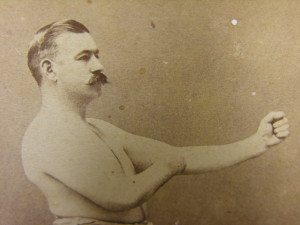
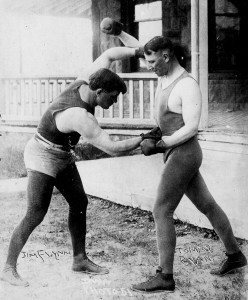
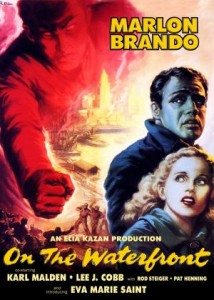
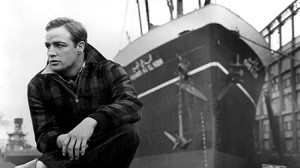
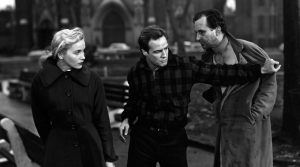
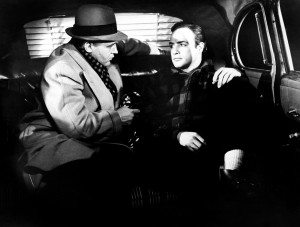
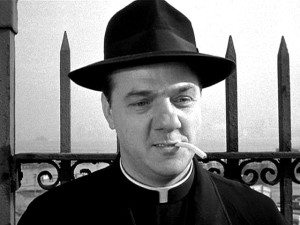
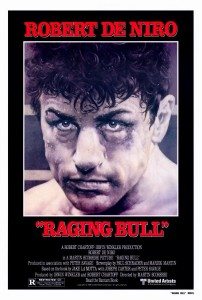
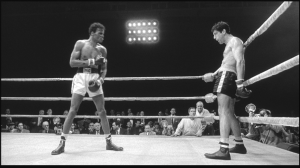
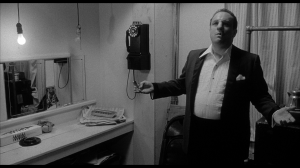
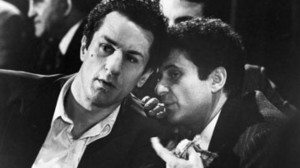
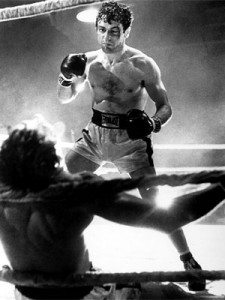
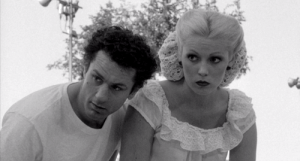
Great write up. Love both these films. I didn’t know about the communist stuff related to On The Waterfront.
Crazy times back then. Or course the movie is great whether or not you wonder at its reason for being.